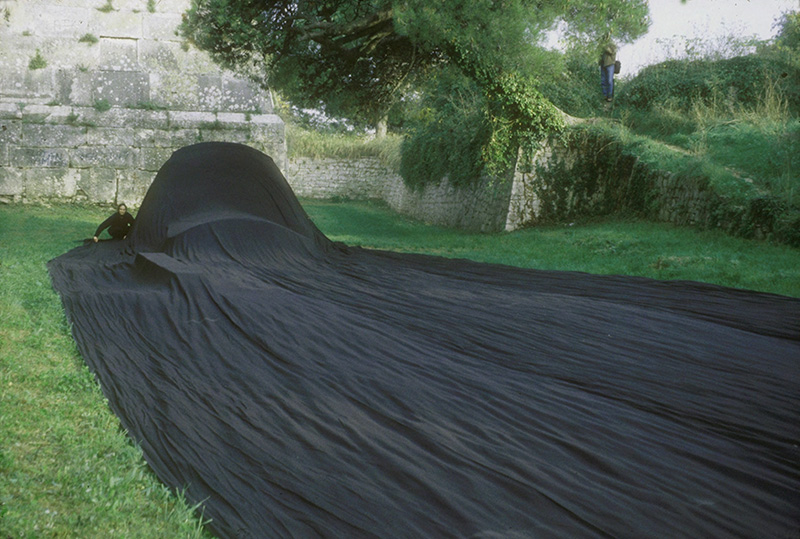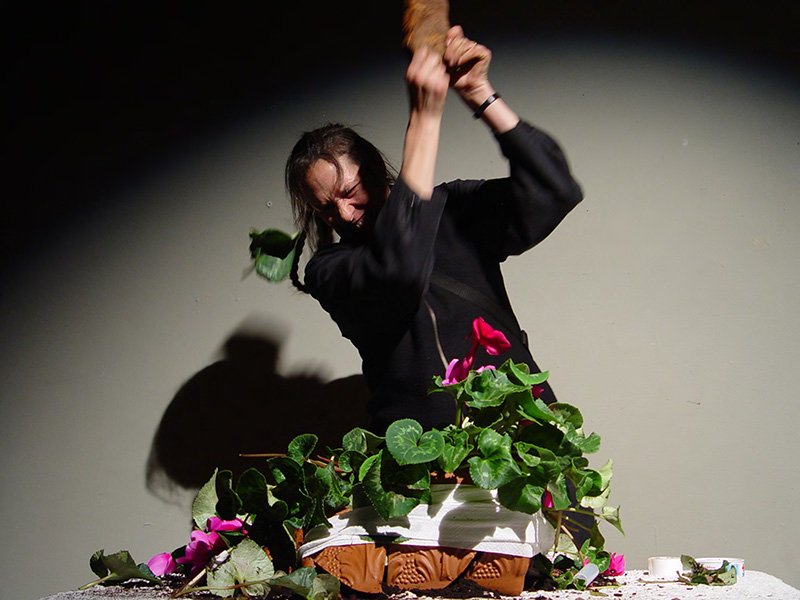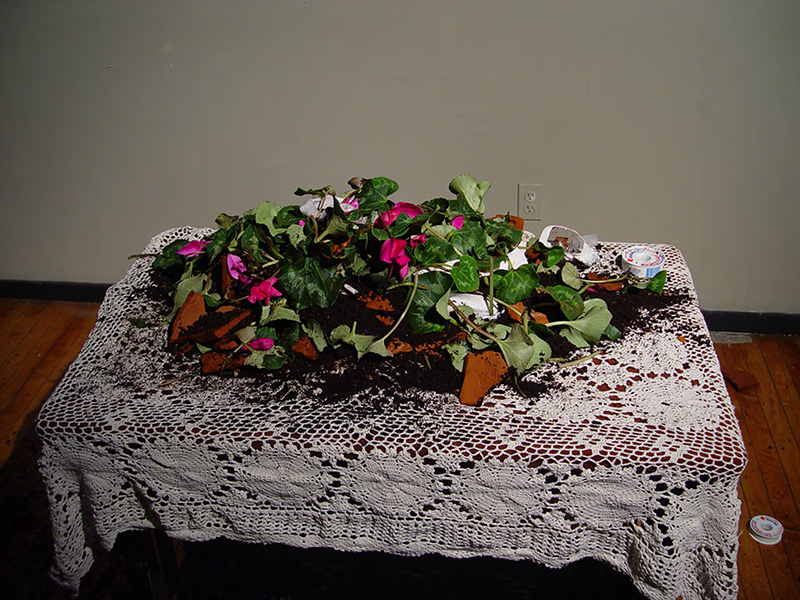INTERVIEW: Marilyn Arsem

Marilyn Arsem belongs to the most powerful and active American Performing Artist. However what distinguish her work from the other performers is that her works are durational in nature, and minimal in actions and materials, like the “100 Ways to Consider Time” at the Museum of Fine Arts Boston. On the occasion of completion of this performance, the newly updated version of the iBook “The Performance Art of Marilyn Arsem” and her participation in the important Venice International Performance Art Week, we discuss with Marilyn Arsem and she explains us why she chooses images and objects from everyday life, turning through her actions and gestures, the small and insignificant, in a theatrical way and narrative to visual arts.
By Efi Michalarou & Dimitris Lempesis
Photo: iBook The Performance Art of Marilyn Arsem, MFA Publications
Mrs. Arsem just has been updated your iBook “The Performance Art of Marilyn Arsem”, an historical book that presents your work from 1987 until your last performance “100 Ways to Consider Time” at Museum of Fine Arts Boston. Why did you choose to make an electronic edition rather than a printed one? What benefits offers an iBook to the readers and what to you as an artist?
In truth, it is the MFA that decided to make the iBook on my work, rather than printing a catalogue. They had published a previous iBook, and were especially interested in the possibility of including other media – video and audio, as well as images, in it. It meant that we could include documentation of the works that were being discussed in the text.
In your last performance, entitled ‘’100 Ways to Consider Time’’ for six hours a day, every day, for 100 days, you were in the Museum of Fine Arts Boston, performing a series of actions relating to time. Each day the action was different, and you never repeated an action. According to what criteria you choose these actions? What was the common conceptual axis that united them?
I chose the topic of time, because I trusted that it was possible to come up with 100 different performances on that subject. The actions were quite varied. On some days I asked the audience to help me examine a question about time, other days my action was quite meditative, sometimes I considered scientific aspects of time, and sometimes the work was more poetic. It wasn’t until I completed each day that I decided what I would do the next day. I needed to follow my train of thought and design an action for the next day that was a logical next step in my inquiries.
Can you explain us, the intention behind the actions? Did that intention change once your were performing? What were your expectations of your audience?
I thought of these 100 performances as experiments. The one constant was that each performance was exactly six hours long. I wanted to better understand how time operates in my life. I am haunted by time; it drives me, and yet I have little control over it.
At Venice International Performance Art week, you presented in the Opening Reading your manifesto “THIS Is Performance Art” (2011), as well as documentation of the abovementioned performance. Why did you choose to present this performance in Venice?
I performed at Venice International Performance Art Week (VIPAW) two years ago, and I hoped to participate in a different way this time. I asked the organizers, Verena Stenke and Andrea Pagnes, of VestAndPage, if they might be interested in including an installation of the documentation of “100 Ways to Consider Time” in the event. They also invited me to read the manifesto at the opening of the event. In addition to presenting performances every day, an important component of VIPAW is an extensive exhibition of documentation of both contemporary and historical performance art from many different countries. I was honored to have my work included.
Do you remember a performance where the role of the public acted as a catalyst?
The public has always been an important aspect of my work. In some works they have occupied the role of witness, but in many other ones they have been active participants, helping to make the performance. In fact, an important element in “100 Ways to Consider Time” was writing contributed by the audience. They had been asked to write about how they experienced time. More than a thousand people answered the question, and this is the first time that those responses have been accessible to the public.
As we know, throughout your career you are doing durational performances. How exhausting process is mentally and physically for you? What preparation is needed to cope? Why are you choosing such performances?
While not all of my work is durational, I often use that form to examine certain questions. It allows both myself and the audience to let go of expectations of entertainment and instead gives space for a process to unfold. Often the physical and psychic impact on the body is part of the work, and can only be revealed through the action over time.
Furthermore you belong to the artists who do not re-produce their performances, but there are unique, why are you doing this?
Making art is a way of thinking, and one way to learn is to always challenge oneself to try new things, to approach a question in a new way, to pay attention to something that one has not considered before.
Download Greek version here.
First Publication: www.dreamideamachine.com
© Interview-Efi Michalarou & Dimitris Lempesis
Info:100 Ways to Consider Time, Curators: Edward Saywell & Liz Munsell, Museum of Fine Arts Boston, Avenue of the Arts, 465 Huntington Avenue, Boston, Duration: 9/11/15-19/2/16, Days & Hours: Mon-Tue, Sat-Sun 10:30-16:30, Wed-Fri 15:30-21:30, www.mfa.org








